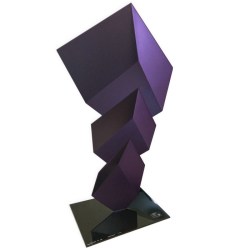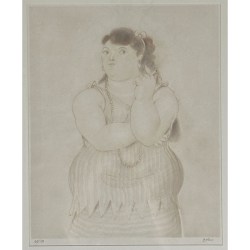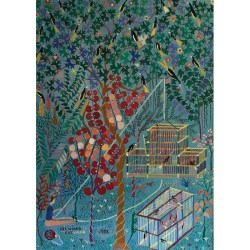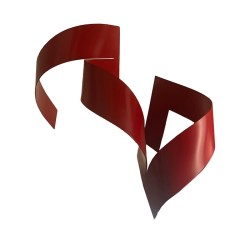Bio
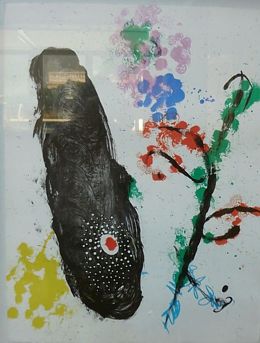 (Barcelona, 1893-Palma de Mallorca, Spain, 1983) Painter, sculptor, engraver and ceramist Spanish. He studied business and worked for two years as clerk in a drugstore, until an illness forced him to retire for a long period in a family home in the small town of Mont-Roig del Camp.Back in Barcelona, he entered the Art Academy directed by Francisco Gali, where he met the latest European artistic trends. Until 1919, his painting was dominated by a formal expressionism Fauvist and Cubist influences, focusing on landscapes, portraits and nudes.That same year he traveled to Paris and met Picasso, Jacob and some current members of the Dadaist, Tristan Tzara as. Alternated new rooms in the French capital with summers in Mont-Roig and his paintings began to evolve towards a better definition of the form, now chased by a strong light that eliminates the contrasts. In the thematic highlight the first signs of a language between dream and spooky, very personal though popular roots, which marked his whole subsequent career.Related to the principles of surrealism, signed the Manifesto (1924) and added to his own work concerns the movement, as the hieroglyphics and calligraphic sign (Carnival of Harlequin). The other major influence of the time would come from the hand of P. Klee, which would reflect the taste for the linear configuration and recreation ethereal atmospheres and nuanced color fields.In 1928, the Museum of Modern Art in New York took two of his paintings, which was a first international recognition of his work a year later, he married Pilar Juncosa. During these years the artist questioned the meaning of painting, a conflict that is clearly reflected in his work. On the one hand, began the series of Dutch interiors, gaudy recreations of paintings of the seventeenth century characterized by a partial return to figuration and a marked tendency toward preciousness, which would remain in their colorful, playful and poetic dummies for Romeo and Juliet of the Diaghilev Ballets Russes (1929). His later painting, however, fled towards greater aridity, schematic and conceptual abstraction. On the other hand, chose his sculptures using recycled materials and waste.The Spanish Civil War only served to accentuate the dichotomy between violent tearing (Head of a Woman) and dreamy escape (Constellation), which gradually was resolved in favor of a renewed serenity, animated by a return to the ingenuity of the symbols Miró House (the bird, the stars, the female figure) which in turn seems to reflect a return to a naive, happy and impetuous in the world. They were not strangers to this kind of spiritual renewal retreats to his occasional island of Mallorca, where in 1956 built a studio in the town of Son Abrines.
(Barcelona, 1893-Palma de Mallorca, Spain, 1983) Painter, sculptor, engraver and ceramist Spanish. He studied business and worked for two years as clerk in a drugstore, until an illness forced him to retire for a long period in a family home in the small town of Mont-Roig del Camp.Back in Barcelona, he entered the Art Academy directed by Francisco Gali, where he met the latest European artistic trends. Until 1919, his painting was dominated by a formal expressionism Fauvist and Cubist influences, focusing on landscapes, portraits and nudes.That same year he traveled to Paris and met Picasso, Jacob and some current members of the Dadaist, Tristan Tzara as. Alternated new rooms in the French capital with summers in Mont-Roig and his paintings began to evolve towards a better definition of the form, now chased by a strong light that eliminates the contrasts. In the thematic highlight the first signs of a language between dream and spooky, very personal though popular roots, which marked his whole subsequent career.Related to the principles of surrealism, signed the Manifesto (1924) and added to his own work concerns the movement, as the hieroglyphics and calligraphic sign (Carnival of Harlequin). The other major influence of the time would come from the hand of P. Klee, which would reflect the taste for the linear configuration and recreation ethereal atmospheres and nuanced color fields.In 1928, the Museum of Modern Art in New York took two of his paintings, which was a first international recognition of his work a year later, he married Pilar Juncosa. During these years the artist questioned the meaning of painting, a conflict that is clearly reflected in his work. On the one hand, began the series of Dutch interiors, gaudy recreations of paintings of the seventeenth century characterized by a partial return to figuration and a marked tendency toward preciousness, which would remain in their colorful, playful and poetic dummies for Romeo and Juliet of the Diaghilev Ballets Russes (1929). His later painting, however, fled towards greater aridity, schematic and conceptual abstraction. On the other hand, chose his sculptures using recycled materials and waste.The Spanish Civil War only served to accentuate the dichotomy between violent tearing (Head of a Woman) and dreamy escape (Constellation), which gradually was resolved in favor of a renewed serenity, animated by a return to the ingenuity of the symbols Miró House (the bird, the stars, the female figure) which in turn seems to reflect a return to a naive, happy and impetuous in the world. They were not strangers to this kind of spiritual renewal retreats to his occasional island of Mallorca, where in 1956 built a studio in the town of Son Abrines.


